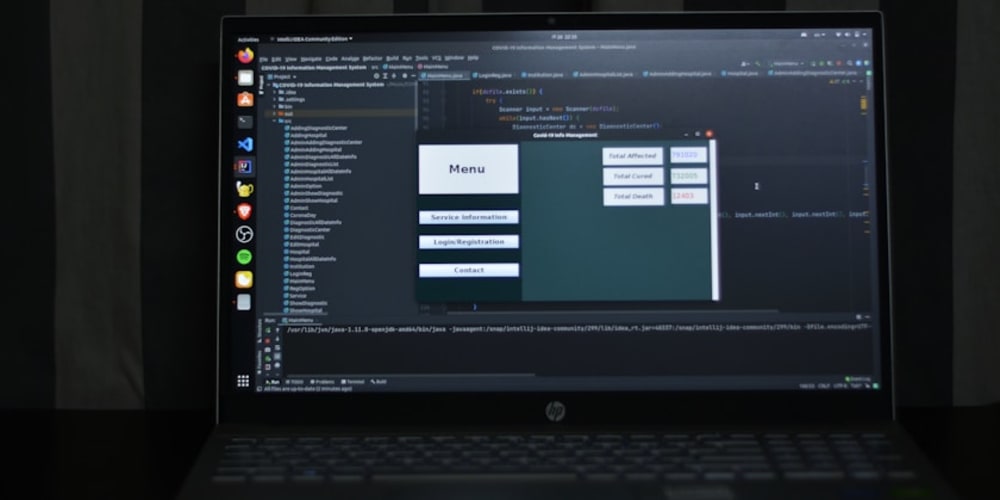On September 15, 2024, a near-Earth asteroid, also abbreviated as NEA, came near the Earth, and the occurrence attracted a lot of attention from the scientific community. It is not only the scope of professional observers armed with the telescope to track such asteroids; data scientists also play a key role in following the above space objects. Machine learning algorithms that identify huge amounts of space data, as well as predictive analytics that anticipate the NEO orbits, have become essential methods of data science, hence identifying these objects. In this article, the author looks at how this occurrence was tracked and how data science is used to contribute to planetary defense.
The increasing relevance of near-earth object tracking
The latter is a potential menace to the Earth as well as other Near Earth Objects, including asteroids. While long-interval statistics of large asteroid impacts are low, should an impact occur, the effects will be devastating. The space objects are watched by the NASA Planetary Defense Coordination Office (PDCO) and its counterparts in other countries in a bid to identify any threatening space object.
NASA up to September 2024 had detected over 35, 000 NEOs and more than 860 of them are bigger than 1 kilometer in size. Tracking these objects is a process of searching for signals from enormous amounts of data gathered from observatories all over the world. But it is here that data science jumps into the picture.
The Involvement of Data Science in Asteroid Identification
The identification of the asteroid which came close to the earth on September 15, 2024 involved data science to some extent. Modern and sophisticated organizations, including NASA, perform analysis on extraordinarily large data feeds coming from ground-based observatories and interplanetary missions with the help of complex algorithms and machine learning models. These models assist in the detection of asteroids with the help of patterns that define observational data.
The current detection techniques used in the determination of asteroids involve either image analysis by astronomers or the use of simple software. However, due to the improvements in telescope sensitivity, the survey that takes place, and the amount of data acquired, it is impossible to proceed with doing it by hand. Currently, with the help of state-of-art algorithms, it becomes possible to find moving objects in millions of pictures taken of stars and galaxies.
Machine Learning Algorithms
Among the biggest achievements in NEO tracking was the use of machine learning algorithms designed for asteroid detection. A vivid example is the HelioLinc3D algorithm applied to the identification of asteroids based on smaller and limited sample data. This optimized convergence algorithm was used in the identification of near-earth asteroids such as the one that passed on the 15 of September. It can work with far much fewer observations as compared to traditional methods hence increasing the asteroid detection rate while at the same time shortening the time taken.
HelioLinc3D has been developed to accommodate data from the Vera C. Rubin Observatory which is expected to start operations in 2025. But it has been tested on the archival data of ATLAS the Asteroid Terrestrial-impact Last Alert System which unveiled the asteroids that were not noticed earlier. When basic information is limited, HelioLinc3D can detect moving objects by computing multiple frames captured of the area of the sky.
Overview of Big data and Predictive modelling
Calculating an asteroid’s orbit is not easy because one has to work with a large quantity of observational data in a sequence of time. Smoothing of the data for the separation of an asteroid involves the use of data science techniques in modeling the orbital patterns of an asteroid. This is done with a consideration of forces of attraction or repulsion such as those exerted by other objects in space.
Big data analysis assists scientists in the analysis of the large datasets that asteroid surveys produce. These are information on the velocity of the asteroid, its distance from the earth as well as, the diameter and the form of the asteroid. When the said variables are input into the current models, then the researchers should be able to predict the paths of these asteroids in the future more accurately. This also lets them be able to predict any future collisions that may exist and from them be able to guess the asteroid's behavior during near encounters.
For the encounter with asteroid on the September 15, 2024 the data received from observation posts in different parts of the world was used with the help of calculations through theoretical models determining the movement of the space object concerning the Earth. These models are constantly under development by agencies such as NASA and similar entities to make the predicted values more accurate given more data information.
Collaboration and Data Sharing
Asteroid detection and tracking involve the use of several organizations of which a number are international organizations that work closely with each other and share data. Several observatories located in various countries send their data to databases like the Minor Planet Center. These databases help data scientists and astronomers to analyze the global motion of asteroids from their computers.
Furthermore, data science enables combining data from optically detected sources, radar observations, and space missions. This allows scientists to use multiple types of data in one model that gives a better estimate of an asteroid’s properties and its trajectory.
For instance, radar measurements allow for determining an asteroid’s distance and its velocity while optical data enable the determination of the asteroid’s size and its shapes. Scientists combine these data sets and with the help of advanced algorithms and machine learning models can predict the future course of the asteroid with a better level of certainty.
Planetary Defense: Mitigation of Risks
Technologies used for the September 15, 2024, asteroid cannot harm the Earth but is part of a planetary defense system. Thus, the National Aeronautics and Space Administration’s Planetary Defense Coordination Office and organizations of the same kind are supposed to locate asteroids that pose a threat to the Earth and consider carrying out asteroid redirection missions.
It is therefore important to note that these efforts are underpinned by data science. Even today it is possible to be given an early warning by constantly developing detection algorithms, enhancing figures, and adopting better predicting models by scientists. With such data, we can be prepared in case of anytime asteroid impact on the Earth.
An excellent illustration of this strategy was NASA’s Double Asteroid Redirection Test (DART) showing the possibility of shifting an asteroid’s course by kinetic impact. This mission pinned its hope on an accurate data assessment to identify the Dimorphos asteroid and calculate how data science is useful in planetary protection missions.
Conclusion
The close approach of the asteroid on September 15, 2024, underscores the critical role of data science in space observation. Using advanced algorithms like HelioLinc3D, along with big data analytics and predictive modeling, scientists can track and predict asteroid movements with high precision. These technologies enhance planetary defense, offering tools to protect Earth from potential space hazards.
For those interested in this field, a data science course in Chennai provides essential training in machine learning, big data, and analytics highly relevant skills not only in space observation but across industries like healthcare, finance, and e-commerce.


















